When the average gardener spots a bug lurking among precious plants, he or she might panic.
What is this bug? Can it hurt me? Can it hurt my plants? When was the last time I checked the leaves on my tomato plants?
Aphids, spider mites, hornworms, and caterpillars can have some devastating impacts on a garden. But not all bugs are bad for your flower beds and veggies. In fact, many creepy crawlies are incredibly beneficial to a garden environment. They eat bad bugs, spread pollen, and add life to a common garden.
By introducing the right kind of bugs like ladybugs, spiders, praying mantis’s and more into your garden, they will protect your plants from the usual suspects and help your garden flourish – let’s discuss the benefits each could provide.
Ladybugs
 Ladybugs are not only a sign of good luck – they’re blessings for your garden as well.
Ladybugs are not only a sign of good luck – they’re blessings for your garden as well.
The reason? Their diets! Ladybugs are famous for being a garden-friendly critter because they eat quite a few of the bad bugs that can cause serious damage to your crops. A single ladybug can eat up to 50 to 60 aphids per day – that’s thousands of aphids over their lifetime.
In addition to aphid control, ladybugs are also known to eat other pests including mites, fleas, and mealworms. Unlike other bugs, their larvae don’t harm plants and can eat even more harmful pests. Ladybugs also secrete a predator-repelling odor that keeps them around for a long time.
The following plants can help you naturally attract ladybugs to your garden:
- Dandelions
- Dill
- Common Yarrow
- Basket of Gold
- Fern-leaf Yellow
- Fennel
Ladybugs are gorgeous additions to any garden – with their bright red wings and adorable polka dots, adding ladybugs to your yard will boost the cuteness factor.
Spiders
 Spiders can be scary at first glance, but these fierce little arachnids can help protect your plants from dangerous predators. Spiders feast on a multitude of unwanted bugs, both inside the home and out. A spider’s diet can consist of:
Spiders can be scary at first glance, but these fierce little arachnids can help protect your plants from dangerous predators. Spiders feast on a multitude of unwanted bugs, both inside the home and out. A spider’s diet can consist of:
- Bed Bugs
- Roaches
- Aphids
- Grasshoppers
- Fruit Flies
- Caterpillars
With such a long list of unwanted pests that can be snared in their webs, it’s obvious that a spider or three should be a staple in every garden. Spiders like gardens that have places where they can spin their famous webs. Large, tall plants provide this space for them – corn is particularly effective at attracting spiders.
Praying Mantis
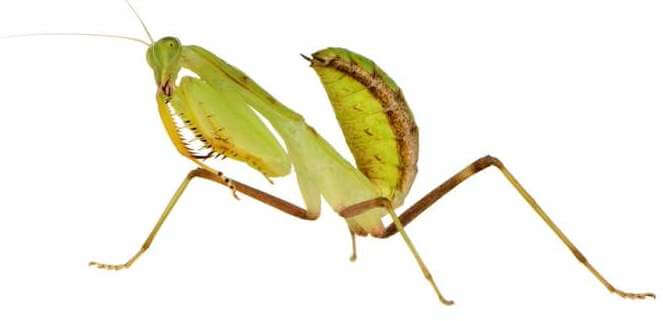 The elusive and mysterious praying mantis also has an extensive and formidable diet. The small critter can eat a variety of unwanted garden pests, including:
The elusive and mysterious praying mantis also has an extensive and formidable diet. The small critter can eat a variety of unwanted garden pests, including:
- Moths
- Caterpillars
- Beetles
- Crickets
- Flies, including whiteflies
- Aphids
Another benefit to having a praying mantis or two in your garden is that they are attracted to some seriously beautiful florae. A few plants that naturally attract the praying mantis include:
- Marigolds
- Yarrow
- Angelica
- Cosmos
- Dill
The praying mantis especially loves long, tall grasses and shrubs. These bugs also look for plants with long leaves and petals for protection from the sun and rain. Making sure that these critters have a place to stay safe will keep them coming back to your garden for years to come!
Green Lacewings
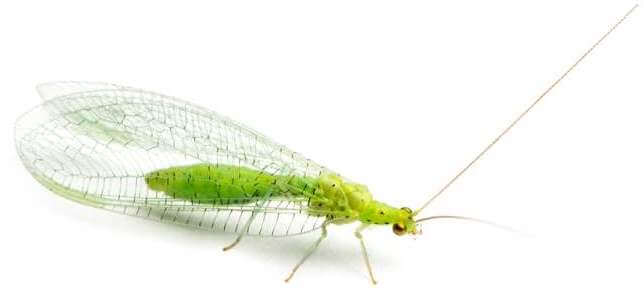 Green lacewings get their namesake from, you guessed it, the delicate lace pattern on their wings. While a stunningly beautiful creature, the green lacewing is more than just a pretty face.
Green lacewings get their namesake from, you guessed it, the delicate lace pattern on their wings. While a stunningly beautiful creature, the green lacewing is more than just a pretty face.
These formidable feasters will eat several common garden pests, including:
- Aphids
- Whiteflies
- Leafhoppers
- Caterpillars
- Mealy Bugs
Lacewings are common bugs and easy to attract to your garden. Plants that naturally draw lacewings include dandelions, dill, coriander, angelica, and sweet alyssum.
Aphid Midges
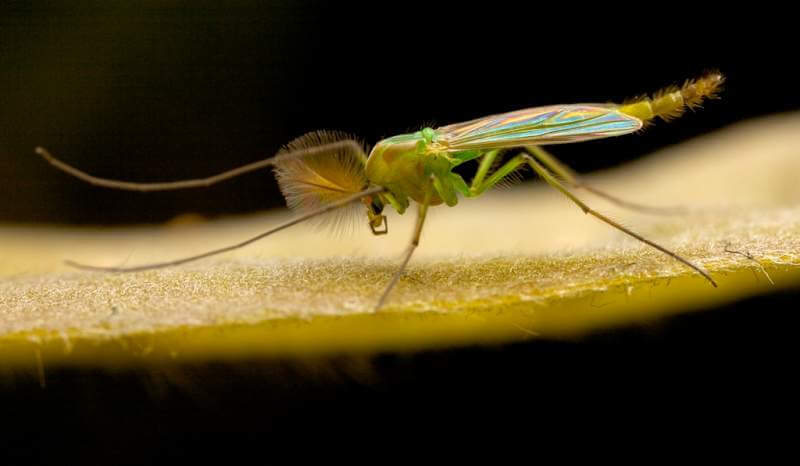 Aphids are infamous for ruining many gardener’s precious plants. The tiny pests can suck the life out of your prized tomato plant before you even realize they’ve arrived. What is a lone gardener to do?
Aphids are infamous for ruining many gardener’s precious plants. The tiny pests can suck the life out of your prized tomato plant before you even realize they’ve arrived. What is a lone gardener to do?
Never fear, the aphid midge is here! The aphid midge’s diet consists of – you guessed it – aphids. These tiny little flies will poison those pesky aphids with their toxic saliva and eat them, protecting all your plants from the little sap-suckers.
Aphid midges like gardens with a source of water, dill, and plants that produce a lot of pollen and nectar.
Bees
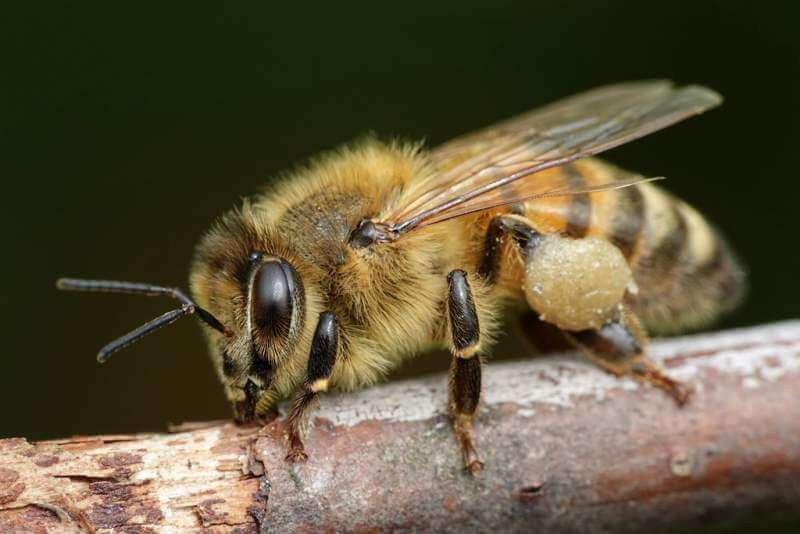 “Save the Bees” is a common cause for good reason. These buzzing creatures can provide some serious damage control for your garden. A bees main job is to pollinate plants. If you have a bush that’s only sprouting a couple of berries or your flowers aren’t blooming as big as they should be, introducing bees to your garden can help enrich those plants. From tomato crops to cranberry bushes, bees can bring vitality to any plant.
“Save the Bees” is a common cause for good reason. These buzzing creatures can provide some serious damage control for your garden. A bees main job is to pollinate plants. If you have a bush that’s only sprouting a couple of berries or your flowers aren’t blooming as big as they should be, introducing bees to your garden can help enrich those plants. From tomato crops to cranberry bushes, bees can bring vitality to any plant.
Bees are common and easy to attract. If you have any plants that bees are known to pollinate, chances are they’re already buzzing around your garden.
Predatory Mites
 Spider mites are another dangerous predator to garden plants, particularly to their delicate leaves. Like aphids, many spider mite infestations go unnoticed until it’s too late and can absolutely ruin anyone’s garden.
Spider mites are another dangerous predator to garden plants, particularly to their delicate leaves. Like aphids, many spider mite infestations go unnoticed until it’s too late and can absolutely ruin anyone’s garden.
The best prevention against spider mites is predatory mites. These tiny creatures feast on spider mites (and pollen, after they’ve eaten all the spider mites). However, environments that are very humid, such as greenhouses, attract predatory mites.
If you live in a naturally humid climate, your chances of attracting a predatory mite is higher than non-humid climates. If you have a spider mite problem in your greenhouse, introducing predatory mites can help keep it under control.
Ground Beetles
 Ground beetles come in over 2,500 different varieties and can provide numerous pest control benefits to your garden. Unlike the other bugs on this list, many creatures that make up the ground beetle’s diet live on the ground.
Ground beetles come in over 2,500 different varieties and can provide numerous pest control benefits to your garden. Unlike the other bugs on this list, many creatures that make up the ground beetle’s diet live on the ground.
Some pests that the ground beetle gladly devour include:
- Caterpillars
- Colorado Potato Beetles
- Slugs
- Cabbage Maggots
- Snails
- Ants
- Certain Species of Moth Larvae
Ground beetles also have big appetites – a single beetle can eat up to 50 caterpillars a day.
If you are having an issue with ground pests and want to naturally attract ground beetles to your garden, the following plants can help:
- Clover
- Evening Primrose
- Amaranthus
Perennials and produce are especially effective for attracting ground beetles, since their larvae feed on the soil’s nutrients year-round. They will also feed on your compost pile.
Hoverflies
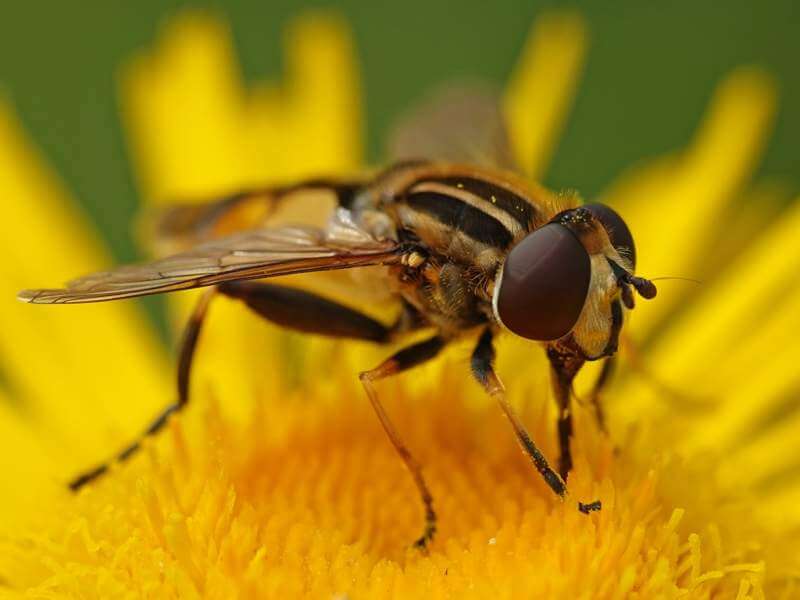 Hoverflies are a species of insect that feed on common garden pests like aphids, caterpillars, and scale insects. Hoverflies are especially effective at combatting an aphid problem. Hoverflies lay their eggs near aphid colonies and hoverfly larvae consume them.
Hoverflies are a species of insect that feed on common garden pests like aphids, caterpillars, and scale insects. Hoverflies are especially effective at combatting an aphid problem. Hoverflies lay their eggs near aphid colonies and hoverfly larvae consume them.
Common and fern-leaf yarrow, dill, and Basket of Gold attract adult hoverflies. If you have a severe aphid problem and need some hoverfly larvae fast, planting fragrant crops can entice the critters to lay their eggs in your garden. Effective options include:
- Garlic
- Oregano
- Sweet Alyssum
- Chives
Braconid Wasps
 Like aphids, hornworms can be a death sentence for many plants, especially tomato plants. To combat these creatures, you should consider introducing braconid wasps to your garden.
Like aphids, hornworms can be a death sentence for many plants, especially tomato plants. To combat these creatures, you should consider introducing braconid wasps to your garden.
Unlike more aggressive wasps, braconids are harmless and will only sting if threatened. Adult braconid wasps feed on common pests like aphids and caterpillars, but their larvae’s feeding process is quite special. Braconid larvae will attach themselves to hornworms and feed on them until the wasps are fully grown. By the time the wasps are grown, the hornworm they’ve attached themselves to will be dead – saving all your tomato plants!
To naturally introduce braconid wasps to your garden, cultivate plants with small flowers that produce nectar. A few of these plants include dill, wild carrot, parsley, lemon balm, fern-leaf, and common yarrow.
Introducing these simple, friendly creatures to your garden is a simple and effective way to combat common garden pests. Don’t be afraid of all creepy crawlies, just know which ones are pests and which ones eat them. With these creatures and more, your garden will flourish into the lush landscape of your wildest dreams.
Author Bio:
Richland Pest and Bee Control is a family-owned pest control company based in multiple cities in Connecticut. Since 1974, Richland Pest and Bee has been helping families protect their homes and gardens from rodents, roaches, and more. You can visit their website here.
Sources:
https://morningchores.com/beneficial-garden-insects/
https://www.organiclesson.com/beneficial-insects-garden-pest-control/
https://www.goodhousekeeping.com/home/gardening/a20705937/beneficial-insects/
https://www.alansfactoryoutlet.com/blog/the-best-and-worst-bugs-to-have-in-the-garden
Share this post if you like it!
